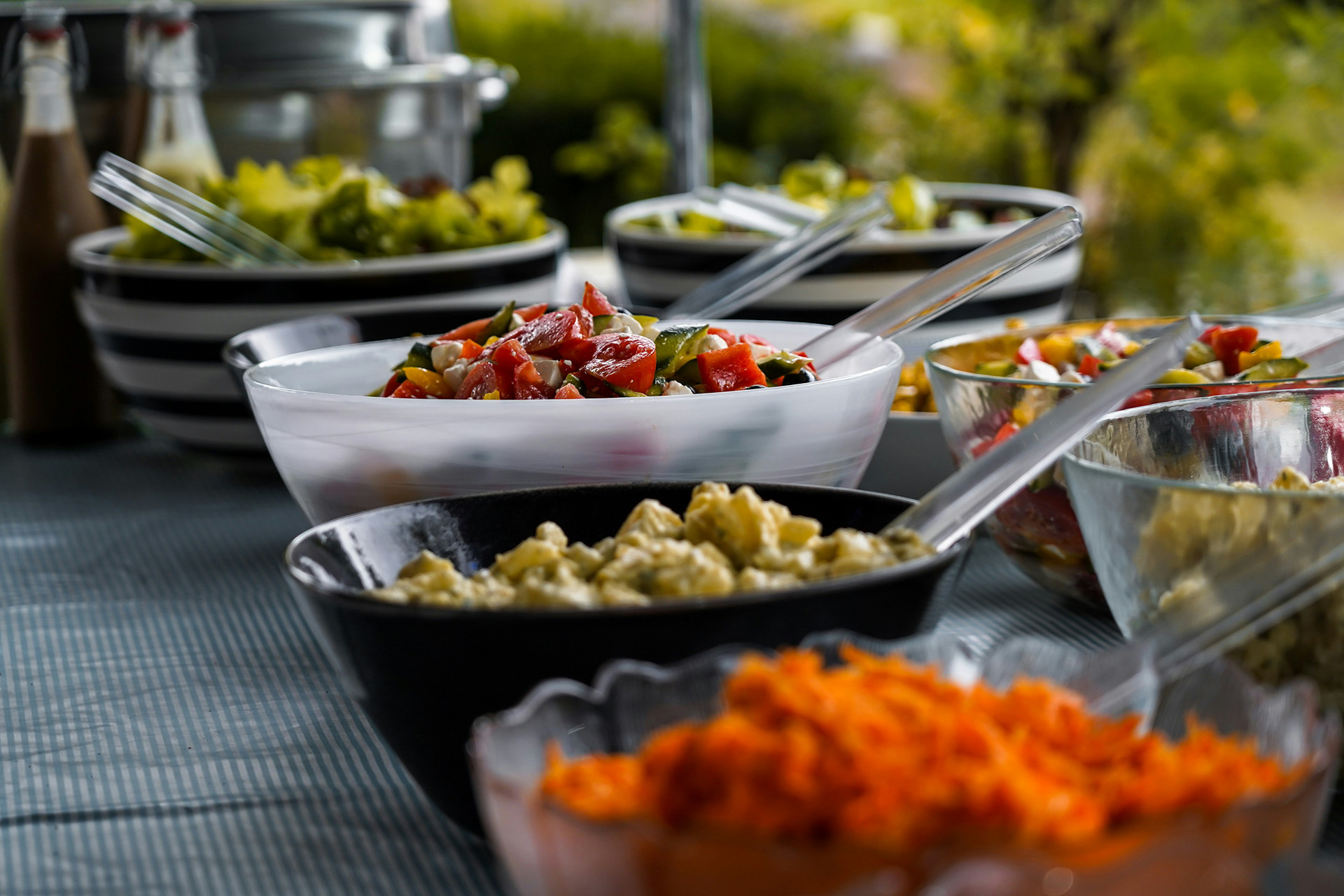Meal type in the hotel
You can select the required meal type on RateHawk: you can do so using the search form or with the help of filters on the hotel search results page. The rate section on the hotel page will show you which meal type is provided for the selected rate.
Problems with buffet dining
People are crowded together
Crowds forming in the self-service zones and on-premises worry visitors due to the high risk of catching coronavirus.
Food may get infected
Plates with food are placed on a buffet without any packaging or other form of protection. It’s enough for one person to sneeze near the food for the other guests to face an increased risk of infection. Moreover, serving cutlery is often used for more than one dish, which also increases the risk of passing on infections.

Photo by Saile Ilyas on Unsplash
Disinfection of the premises
Buffet dining involves a constant flow of tourists throughout the day for breakfast, lunch and dinner, with short breaks. As a result, it becomes a challenge to disinfect the premises on time: staff don’t have time to exhaustively clean the halls and tables, the dishes and other surfaces.
How buffet dining may be reborn
Despite all the difficulties of the situation with the virus, there are a number of possible scenarios for hoteliers who are intent on offering their guests meals as before.
The family service model
The dishes are provided for a set group of people, like a mini-version of the buffet: the diversity of the dishes will remain, while social activity is reduced.
Introduction of à la carte dining
This format is typical for restaurants and is also popular in hotels: à la carte dining allows the hotels to offer visitors dishes from the menu while maintaining diversity of the dishes thanks to multi-national cuisine.
Comfort and safety for the hotel guests
An increasing number of hotels are adding information on the health measures taken. You can view the full list of such measures in the All Services and Amenities section of the hotel page on RateHawk. Read our separate article for more information.
Room service
You can reduce the number of social contacts to a minimum by getting the food delivered to your room. The hotel might only offer breakfast in your room, but it may have expanded this format for other mealtimes as well.

Photo: Wooden Earth – Trays
Dining by timetable
During check-in, the receptionist may ask the guests what their preferred breakfast, lunch and dinner times are. This will enable the hotel to create groups of diners split by time and hence find a way to avoid crowding. Moreover, setting a timetable solves the problem of disinfecting the premises — this can be built into the overall timetable.
If, previously, the key factor for visitors was price, then it is now hygiene and safety. In current times, hoteliers have to be flexible and resourceful like never before to adapt to the new situation and ensure maximum comfort for guests while observing a high standard of epidemiological safety.



